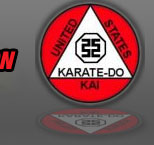
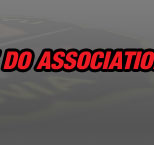
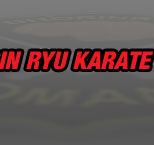
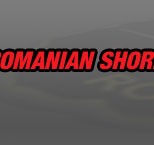
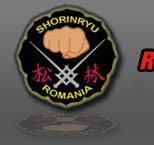
English
English




Kata
Kata are traditional forms which imitates the fight with many opponents. Kata represents the essence of traditional authentic Karate (Okinawa-Te), because it keeps and transmits to the people, the physical attitude (positions, motions, turnings, kicks and punches) and the mental attitude (focus, decision, self-confidence, etc), but the use of internal force in the fight alike.
Kata is unquestionable a part of karate training, at any level.
The practice of kata offers people who practice them a structure sense and the possibility to apply them in the real fight. Techniques-in-techniques and the profound meaning of some techniques and techniques combinations are available only if the practice of a Kata is often and intense.
Kata-s which are practiced in Shorin Ryu style:
Fukyugata Ichi
Fukyugata Ni
Fukyugata Ichi was created by Osensei Shoshin Nagamine in 1941 and Fukyugata Ni by the Master of Goju-Ryu, Chojun Miyagi. These two introductory kata were originally requested to be created by a special committee of all the Okinawan Karate-Do Association organized and summoned by the governor of Okinawa at that time, Mr. Gen Hayakawa. The reason for the inception of these two introductory kata was to allow beginners and school children to approach Karate practice in the most lenient way possible.
Pinan Shodan
Pinan Nidan
Pinan Sandan
Pinan Yondan
Pinan Godan
Pinan I through V were created by Anko Itosu in 1907 and were intended to be practiced by high school students as an integral part of the regular curriculum. Itosu Sensei developed this Kata for health promotion whereby the combat system hardly a role played. There are different theories concerning the Pinan Kata:
Itosu Sensei derived the Pinan Kata from the Kata Sakugawa No Kusanku.
Itosu Sensei derived the Pinan Kata from the chinese Kata Chanan.
Itosu Sensei derived the Pinan Kata from the chinese Kata Chanan and extended it with elements from the Kata Kusanku.
Naihanchi Shodan
Naihanchi Nidan
Naihanchi Sandan
The composer of Naihanchi Shodan through Sandan is unknown. These ancient kata were the introductory ones to Karate for beginners before the Fukyugata and Pinan kata were composed. The most important and significant distinction of this Kata lies in the sideward movements for the defence and offensive. Chotoku Kyan learned the Naihanchi Kata from Sokon Matsumura. Itosu Sensei simplified Matsumura's Naihanchi Kata.
Ananku
The composer of this short kata is unknown and the history of it is comparatively short. The characteristic of this kata is noted by the lunging stances (Zenkutsu-dachi) for defensive and offensive movements.
Wankan
The composer of this kata is unknown also, but it has a long history. This kata was practiced mostly in Tomari Village. The characteristics of this kata are its elegance combined with powerful movements of attack and defense sequences.
Rohai
The composer of this kata is also unknown, but it has a long history as well. This kata also was mostly practiced in the village of Tomari. The characteristic of this kata is the one-foot stances where the other foot is drawn to deliver a quick snap-kick. It is a short kata but is very elegant looking.
Wanshu
It is believed that this kata was brought to Okinawa in 1683 by a Chinese envoy named Wanshu; but later, this kata was reformed and developed by Karate men of Tomari Village. The characteristic of this kata is the execution of hidden fist punches. Chotoku Kyan learned the Kata Wanshu from Maeda Pechin, a disciples of Kosaku Matsumora. Nagamine Sensei learned the Kata from Kodatsu Iha.
Passai
The composer of this kata is also unknown. The characteristic of this kata is the execution of knife-hand techniques. This kata was the favorite of many Karate men of Tomari Village. Chotoku Kyan learned this Kata from Kokan Oyadomari. Nagamine Sensei learned the Kata from Kodatsu Iha.
Gojushiho
The composer of this kata is also unknown. Goju-Shi-Ho literally means 54 steps. The characteristics of this kata are the spear-hand thrust and the resemblance of a drunken man's movements. Chotoku Kyan learned this Kata from Sokon Matsumura.
Chinto
The composer of this kata is unknown. The characteristics of this kata are the execution of a flying kick, and every movement is composed in a diagonally straight line. It's a long type of kata with techniques in which both offence and defense are carried out simultaneously using both hands, including: ashiwaza (leg technique) from jigo-tai (defensive posture) and zenkutsu-tai (forward posture), and migiashi nidan-geri (double front snap kick with right leg). Chotoku Kyan learned this Kata from Kosaku Matsumora. Nagamine Sensei learned the Kata from Kodatsu Iha.
Kushanku
This kata was adopted and developed by Okinawan Karate men after it was brought to Okinawa in 1761 by a Chinese Martial Artist named Kusanku. This kata is the most magnificent and advanced kata of all Matsubayashi Ryu Karate. It is also the longest and most difficult kata, requiring painstaking practice for more than a decade for mastery. Kusanku had two famous disciples, Sakugawa Kanga and Chatan Yara. The form of the Kata practised in Matsubashi-ryu, however, was thaught to Kyan Chotoku by Chatan Yara, a contemporary of Matsumura. Kyan taught the Kata to Arakaki, who thaught it to Shimabuku, who in turn taught it to Nagamine Sensei.

ÒCopyright Asociatia Shorin Ryu Karate Do Romania.All Rights Reserved 2007
